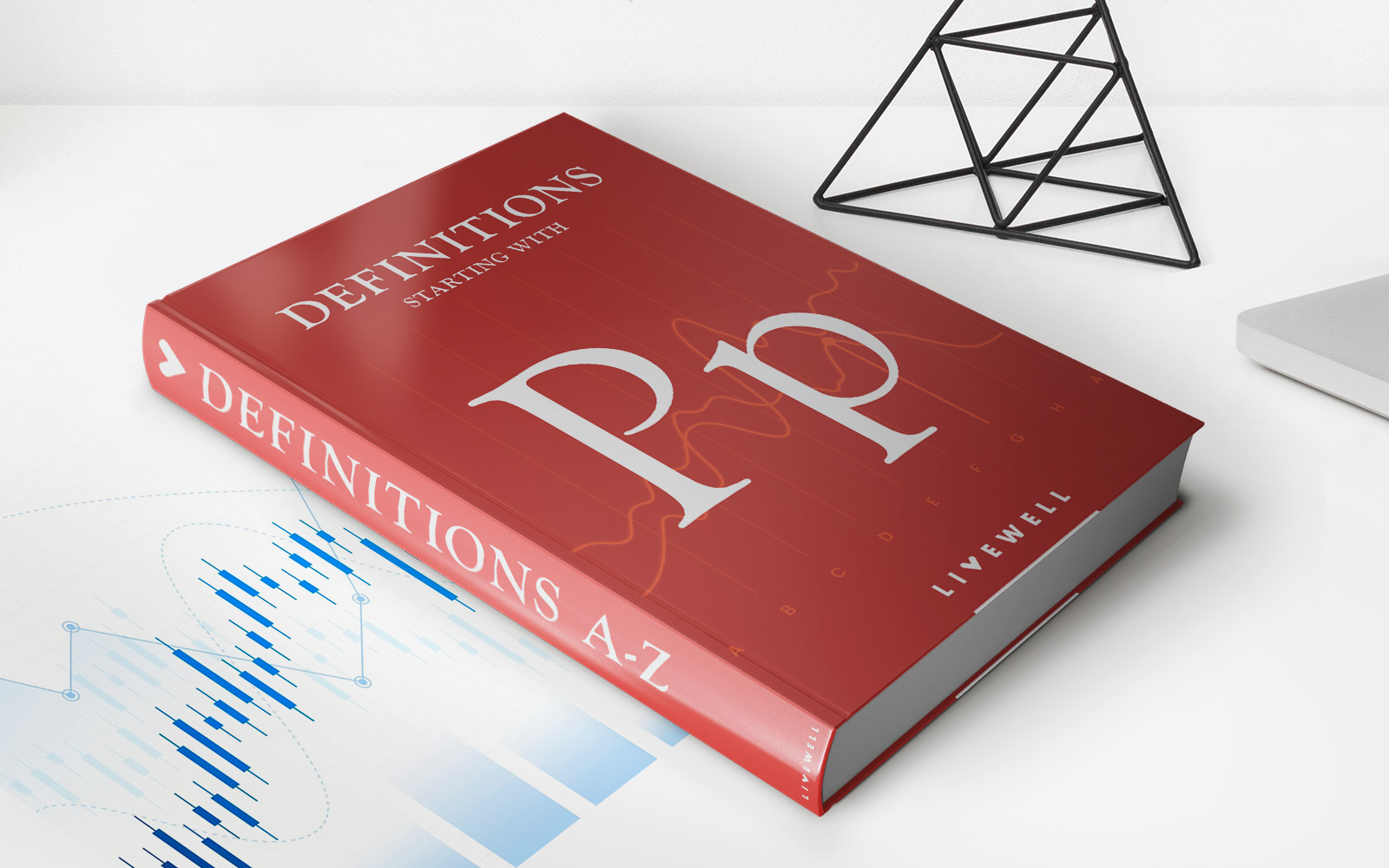

Finance
How Many 401K Accounts Can You Have
Published: October 18, 2023
Learn about finance and discover how many 401k accounts you can have. Maximize your retirement savings with expert advice and tips.
(Many of the links in this article redirect to a specific reviewed product. Your purchase of these products through affiliate links helps to generate commission for LiveWell, at no extra cost. Learn more)
Table of Contents
- Introduction
- Understanding 401(k) Accounts
- Contribution Limits for 401(k) Accounts
- Advantages of Having Multiple 401(k) Accounts
- Factors to Consider when Having Multiple 401(k) Accounts
- How Many 401(k) Accounts Can You Have?
- Consolidating Multiple 401(k) Accounts
- Alternative Retirement Account Options
- Conclusion
Introduction
When it comes to planning for retirement, having a solid investment strategy is crucial. One popular retirement savings vehicle is the 401(k) account, offered by many employers to help employees save for their golden years. But what if you have multiple 401(k) accounts? Is it even possible to have more than one? In this article, we will explore the concept of having multiple 401(k) accounts and discuss the advantages, considerations, and possible alternatives.
Before delving into the topic, let’s first understand what a 401(k) account is. A 401(k) account is a tax-advantaged retirement savings plan provided by employers. Employees can contribute a portion of their pre-tax income into the account, allowing their retirement savings to grow tax-free until withdrawal. Typically, employers also have the option to match a percentage of the employee’s contributions, further incentivizing employees to save.
401(k) accounts offer several benefits, including tax advantages and the potential for employer-matching contributions. These accounts are often vehicle of choice for retirement savings due to their accessibility and convenience. However, as individuals progress in their careers, they may find themselves contributing to multiple 401(k) accounts, especially if they change jobs. This begs the question: What are the rules and limitations surrounding having multiple 401(k) accounts?
Having multiple 401(k) accounts can have both advantages and disadvantages. One advantage is that it allows individuals to diversify their retirement savings across different employer-sponsored plans. This diversification can help mitigate risk and increase the chance of a secure retirement. Additionally, having multiple accounts may provide more flexibility in choosing investment options and managing risk tolerance.
On the other hand, having multiple 401(k) accounts can also lead to complications and inefficiencies. Managing multiple accounts may result in a lack of oversight and difficulty in tracking contributions and investment performance. Additionally, each account may have its own set of administrative fees, which can eat into the overall returns. It’s important to carefully weigh these pros and cons before deciding to have multiple 401(k) accounts.
Now that we understand what a 401(k) account is and the potential advantages and disadvantages of having multiple accounts, let’s dive into the specifics. How many 401(k) accounts can you have, and what factors should you consider when making this decision? We will explore these questions in the following sections.
Understanding 401(k) Accounts
Before delving into the intricacies of multiple 401(k) accounts, it’s important to have a solid understanding of what a 401(k) account entails. A 401(k) account is a type of employer-sponsored retirement savings plan that allows employees to invest a portion of their pre-tax income for retirement. These accounts are named after the section of the Internal Revenue Code that governs them.
One of the primary advantages of a 401(k) account is the ability to save for retirement on a tax-advantaged basis. This means that contributions made to the account are deducted from the employee’s taxable income, reducing their current tax liability. Additionally, the funds in the account grow tax-deferred until they are withdrawn during retirement.
Employees contribute to their 401(k) accounts through regular payroll deductions. They have the option to invest their contributions in a variety of investment options, such as mutual funds, stocks, and bonds. The specific investment options available will depend on the plan offered by the employer.
Many employers choose to offer a matching contribution to incentivize employees to save for retirement. For example, an employer might offer a 50% match on employee contributions up to a certain percentage of their salary. This is essentially free money that employees can take advantage of to boost their retirement savings.
Another key feature of 401(k) accounts is that they have contribution limits set by the Internal Revenue Service (IRS). For the 2021 tax year, employees can contribute up to $19,500 to their 401(k) accounts. For those aged 50 and older, an additional catch-up contribution of $6,500 is allowed, bringing the total contribution limit to $26,000.
It’s important to note that there are different types of 401(k) plans, including traditional 401(k) plans and Roth 401(k) plans. Traditional 401(k) plans allow employees to defer income tax on their contributions and earnings until they withdraw the funds in retirement. On the other hand, Roth 401(k) plans allow employees to make after-tax contributions and enjoy tax-free withdrawals in retirement, provided certain criteria are met.
Overall, 401(k) accounts provide individuals with a powerful tool for saving for retirement. They offer tax advantages, potential employer contributions, and a range of investment options. Now that we have a firm understanding of what a 401(k) account is, let’s delve into the contribution limits for these accounts in the next section.
Contribution Limits for 401(k) Accounts
401(k) accounts offer individuals the opportunity to save for retirement on a tax-advantaged basis. However, there are limits to how much you can contribute to these accounts each year. Understanding these contribution limits is crucial to effectively plan your retirement savings strategy.
For the 2021 tax year, the IRS has set the contribution limit for 401(k) accounts at $19,500. This means that you can contribute up to $19,500 from your pre-tax income to your 401(k) account. It’s important to note that this contribution limit applies to both traditional 401(k) and Roth 401(k) accounts combined. However, if you have multiple 401(k) accounts from different employers, you can contribute up to the limit for each account, as long as the total contributions across all accounts do not exceed the annual limit.
For individuals aged 50 or older, an additional catch-up contribution of $6,500 is allowed, bringing the total contribution limit to $26,000. This catch-up contribution is designed to help those closer to retirement save more aggressively. Similar to the general contribution limit, the catch-up contribution can be divided among multiple 401(k) accounts as long as the overall limit is not exceeded.
It’s crucial to note that the contribution limit is subject to periodic inflation adjustments, so it’s essential to stay updated with the latest limits set by the IRS. Exceeding the contribution limits can result in penalties and potential tax implications.
Employer contributions do not count towards the annual contribution limit. Many employers choose to match a percentage of their employees’ contributions, commonly known as an employer match. This match is essentially free money that employees can take advantage of to boost their retirement savings. The employer match varies depending on the employer’s policy, but it is typically expressed as a percentage of the employee’s contributions, such as 50% or 100%, up to a certain limit, such as 3% or 6% of the employee’s salary.
Contributing the maximum amount allowed to your 401(k) account is a wise financial move if you have the means to do so. It not only maximizes your retirement savings potential, but it also takes advantage of the tax benefits offered by these accounts. However, it’s important to consider your overall financial situation and budget carefully when deciding how much to contribute.
In summary, the contribution limits for 401(k) accounts are subject to annual caps set by the IRS. As of the 2021 tax year, the general contribution limit is $19,500, with an additional catch-up contribution of $6,500 for individuals aged 50 and older. These limits apply to both traditional and Roth 401(k) accounts combined. Employer contributions do not count towards the individual contribution limits, and taking advantage of employer matches can provide significant additional savings for your retirement.
Advantages of Having Multiple 401(k) Accounts
While managing multiple 401(k) accounts may seem like a daunting task, it can actually provide several advantages when it comes to planning for your retirement. Here are some key benefits of having multiple 401(k) accounts:
Diversification: One of the significant advantages of having multiple 401(k) accounts is the ability to diversify your retirement savings across various investment options. Different employers may offer different investment choices within their 401(k) plans. By contributing to multiple accounts, you can spread your investments across a wider range of asset classes, such as stocks, bonds, and mutual funds. Diversification can help mitigate risk and potentially enhance your investment returns over the long term.
Flexibility in Investment Options: Having multiple 401(k) accounts allows you to take advantage of the investment options offered by each employer’s plan. Each plan may have its own set of available funds or investment options. By having multiple accounts, you can choose the most suitable investment options for your risk tolerance and investment goals. This flexibility can enable you to create a well-rounded investment portfolio that aligns with your financial objectives.
Control over Risk Tolerance: Every individual has a different risk tolerance when it comes to investing. Some may prefer a more conservative approach, while others may be willing to take on higher risks for potentially greater returns. Having multiple 401(k) accounts allows you to allocate your contributions according to your risk tolerance. For example, you can contribute to a more aggressive growth-focused plan in one account while opting for a more conservative bond or index fund strategy in another account. This strategy gives you greater control over your overall investment risk and adds flexibility to your portfolio.
Access to Employer Match: Many employers provide a matching contribution to their employees’ 401(k) accounts. The match is essentially free money that can significantly boost your retirement savings. By contributing to multiple 401(k) accounts, you can take advantage of multiple employer matches if you have more than one employer during your career. This can accelerate your savings and increase your retirement nest egg.
Beneficial in Times of Job Transition: Job changes are a common occurrence in today’s dynamic work environment. If you switch employers, having multiple 401(k) accounts makes the transition smoother. You can leave your previous 401(k) account untouched and continue to contribute to your new employer’s plan. This approach eliminates the need to roll over your old account and potentially face tax implications. It also allows your old account to grow and accumulate wealth independently. Ultimately, having multiple accounts provides greater flexibility and avoids disruptions in your retirement savings strategy when changing jobs.
While there are several advantages to having multiple 401(k) accounts, it’s important to weigh them against potential drawbacks and consider your individual circumstances. Managing multiple accounts requires careful oversight and organization to ensure you stay on track with your retirement savings goals. In the next section, we will explore some of the factors you should consider when deciding how many 401(k) accounts to have.
Factors to Consider when Having Multiple 401(k) Accounts
While having multiple 401(k) accounts can offer advantages in terms of investment options and diversification, there are several factors you should consider before deciding to maintain multiple accounts. Here are some key factors to keep in mind:
Administrative Complexity: Managing multiple 401(k) accounts can add complexity to your financial life. Each account may have its own administrative requirements, such as tracking contributions, monitoring investment performance, and managing beneficiary designations. It’s important to consider whether you have the time and organizational skills to effectively manage and keep track of multiple accounts.
Account Fees: Each 401(k) account may have its own set of administrative fees. These fees can vary from plan to plan and may include account maintenance fees, investment management fees, and expense ratios. It’s essential to review the fee structure of each account to understand the potential impact on your overall investment returns. If the fees are high, they could eat into your savings and reduce the potential growth of your retirement funds.
Investment Oversight: With multiple 401(k) accounts, you need to carefully monitor and manage your investment allocations. It’s important to periodically review your investment choices and ensure they align with your risk tolerance and long-term financial goals. Diversification is beneficial, but it’s also crucial to strike a balance and avoid excessive complexity in your investment strategy.
Consolidation Opportunities: Consolidating multiple 401(k) accounts can simplify your financial life. If you change jobs or have old 401(k) accounts from previous employment, consider consolidating them into a single account. This consolidation can make it easier to track your savings, reduce administrative burdens, and potentially open up more investment options. However, before consolidating, carefully review the terms and conditions of each account, as well as any potential tax implications.
Tax Considerations: When deciding how many 401(k) accounts to have, it’s important to consider any tax implications. If you have both traditional and Roth 401(k) accounts, you should evaluate the tax advantages of each and how they align with your retirement goals. Additionally, if you plan to make after-tax contributions, such as with a Roth 401(k), having multiple accounts may allow you to customize your contributions based on your tax situation.
Overall Retirement Strategy: Consider your overall retirement strategy and how multiple 401(k) accounts fit into it. Evaluate your goals, risk tolerance, and time horizon. Determine whether having multiple accounts aligns with your long-term financial objectives or if it adds unnecessary complexity to your retirement planning. You may find that consolidating accounts or diversifying investments within a single account is a more suitable approach for your specific needs.
Ultimately, the decision to have multiple 401(k) accounts should be based on careful consideration of these factors and an evaluation of your individual circumstances. There is no one-size-fits-all answer, as what works for one person may not work for another. Strike a balance between the advantages and disadvantages, and tailor your approach to best align with your retirement goals and financial situation.
In the next section, we will explore how many 401(k) accounts you can have and the limitations set by the IRS.
How Many 401(k) Accounts Can You Have?
When it comes to the number of 401(k) accounts you can have, there is no specific limit imposed by the Internal Revenue Service (IRS). This means that you can have multiple 401(k) accounts from different employers, as long as you meet the eligibility criteria for each plan.
Each employer sets up its own 401(k) plan, and as an employee, you have the option to participate in the plan if you meet the plan’s requirements. This allows you to contribute to each employer’s 401(k) plan independently and potentially take advantage of any matching contributions offered by each employer.
Having multiple 401(k) accounts can offer benefits such as diversification, flexibility in investment options, and the ability to access multiple employer matches. It allows you to customize your retirement savings strategy based on each employer’s plan offerings and your personal preferences.
However, while there is no limit to the number of 401(k) accounts you can have, it’s important to consider the practical implications of managing multiple accounts. As mentioned earlier, managing multiple accounts may add administrative complexity and increase the number of fees that you have to monitor.
Additionally, keeping track of contributions, investment performance, and beneficiary designations across multiple accounts can be challenging. It may require a higher level of organization and oversight to ensure that your retirement savings are on track.
If you have multiple 401(k) accounts from previous employers, it may be beneficial to consider consolidation. Consolidating your old 401(k) accounts into a single account can simplify your financial life, reduce administrative burdens, and potentially offer a wider range of investment options.
When considering consolidation, it’s important to evaluate the terms and conditions of each account and any potential tax implications. You may need to consult with a financial advisor or tax professional to determine the best course of action based on your specific circumstances.
Ultimately, the number of 401(k) accounts you have should be based on your personal financial situation, retirement goals, and your ability to effectively manage and monitor each account. Having multiple 401(k) accounts can offer advantages in terms of investment flexibility and employer matches, but it’s important to weigh these benefits against the potential complexities of managing multiple accounts.
In the next section, we will explore the process of consolidating multiple 401(k) accounts and some alternative retirement account options to consider.
Consolidating Multiple 401(k) Accounts
If you find yourself with multiple 401(k) accounts from previous employers, it may be advantageous to consider consolidating them into a single account. Consolidation can simplify your financial life and offer several benefits. Here are some key considerations when it comes to consolidating multiple 401(k) accounts:
Easier Account Management: Managing multiple 401(k) accounts can be complex and time-consuming. By consolidating your accounts, you streamline your financial affairs and have a single account to monitor. This makes it easier to track your contributions, investment performance, and overall progress towards your retirement goals.
Reduced Administrative Burdens: Each 401(k) account may have its own administrative requirements, such as beneficiary designations, paperwork, and contact information updates. By consolidating your accounts, you eliminate the need to manage multiple sets of administrative tasks, saving you time and effort.
Potential Cost Savings: Each 401(k) account may have associated administrative fees and investment management expenses. By consolidating into one account, you may reduce these costs by eliminating duplicate fees. This can help maximize your overall investment returns and improve the efficiency of your retirement savings.
Improved Investment Options: Consolidating your 401(k) accounts can potentially provide access to a broader range of investment options. When you have multiple accounts, you may be limited to the investment choices offered by each individual plan. By consolidating, you can choose a single account that provides a wider array of investment options that align with your risk tolerance and financial goals.
Simplified Retirement Planning: Consolidating your 401(k) accounts into a single account allows for a more comprehensive retirement planning strategy. It provides a clearer view of your overall retirement savings and makes it easier to develop an investment plan that suits your specific needs. Additionally, having one account simplifies your retirement income calculations and distribution planning when you reach retirement age.
When considering consolidation, it’s important to understand the process. Typically, you have several options for consolidating your 401(k) accounts:
- Rollover to an Individual Retirement Account (IRA): You may choose to roll over your 401(k) account balances into a traditional or Roth IRA. This allows you to maintain tax-advantaged status and potentially access a broader range of investment options. Be aware of any potential tax implications and consider consulting with a financial advisor before making this decision.
- Transfer to a Current Employer’s Plan: If your new employer allows it, you may be able to transfer your old 401(k) account balances into your current employer’s plan. This can simplify account management and maintain the benefits of contributing to an employer-sponsored retirement plan.
- Leave Funds in Existing 401(k) Accounts: Depending on your specific circumstances and the features of your existing 401(k) accounts, you may choose to leave your funds where they are. However, this approach can make it more challenging to manage and monitor your retirement savings over time.
Before making a decision to consolidate, carefully review the terms and conditions of each account, as well as any potential tax implications. Consult with a financial advisor or tax professional to ensure that consolidation aligns with your specific financial goals and overall retirement planning strategy.
While consolidation can offer benefits, it’s important to consider your unique situation and evaluate whether it makes sense for you. Take into account factors such as the investment options, fees, and overall simplicity of managing your retirement savings. With careful consideration, consolidation can help simplify your financial life and bring you closer to achieving your retirement goals.
In the final section, we will explore alternative retirement account options to consider if having multiple 401(k) accounts does not align with your needs.
Alternative Retirement Account Options
While 401(k) accounts are a popular choice for retirement savings, they are not the only option available. If having multiple 401(k) accounts does not align with your needs or if you are seeking additional retirement savings options, here are some alternative retirement account options to consider:
Individual Retirement Accounts (IRAs): IRAs are a popular choice for individuals looking to save for retirement outside of an employer-sponsored plan. There are two main types of IRAs: Traditional and Roth. Traditional IRAs allow individuals to contribute pre-tax income, and withdrawals are generally taxed at retirement. Roth IRAs, on the other hand, accept after-tax contributions, but withdrawals are typically tax-free in retirement. IRAs offer a wide range of investment options, including stocks, bonds, mutual funds, and more.
Simplified Employee Pension (SEP) IRAs: SEP IRAs are designed for self-employed individuals and small business owners who want to offer a retirement plan to their employees. SEP IRAs operate similarly to traditional IRAs but have higher contribution limits. Both employers and employees can make contributions to SEP IRAs, and contributions are tax-deductible for employers.
Solo 401(k) Plans: Solo 401(k) plans are retirement accounts for self-employed individuals or business owners with no employees, other than a spouse. They operate similarly to traditional 401(k) plans but are designed to meet the needs of self-employed individuals. Solo 401(k) plans allow for higher contribution limits compared to traditional IRAs and provide the opportunity for both employee and employer contributions.
Simplified Employee Pension (SEP) 401(k) Plans: SEP 401(k) plans are designed for small business owners who want to offer retirement benefits to their employees while also enjoying the flexibility of contributions allowed in traditional SEP IRAs. These plans allow for higher contribution limits and can be a suitable option for businesses with a few employees.
Health Savings Accounts (HSAs): While primarily used for healthcare expenses, Health Savings Accounts (HSAs) can also serve as a retirement savings tool. HSAs are available to individuals with high-deductible health insurance plans. Contributions to HSAs are tax-deductible, grow tax-free, and withdrawals are tax-free when used for qualified medical expenses. Once individuals reach age 65, they can make withdrawals from HSAs for any reason without incurring penalties, although taxes may apply if not used for medical expenses.
Taxable Brokerage Accounts: If you have maximized your contributions to employer-sponsored retirement plans and IRAs, you can consider opening a taxable brokerage account to invest additional funds for retirement. While these accounts do not offer tax advantages like retirement accounts, they provide flexibility in terms of the investment choices and the ability to access funds with no withdrawal restrictions.
These alternative retirement account options can supplement or replace the need for multiple 401(k) accounts, depending on your individual circumstances and goals. It’s important to evaluate the features, contribution limits, tax advantages, and investment options associated with each option to determine which aligns best with your financial situation and retirement aspirations.
Before making any decisions, it’s advisable to consult with a financial advisor or tax professional who can provide personalized guidance and help you make informed choices based on your specific needs and objectives.
As you navigate the world of retirement savings, remember that the ultimate goal is to establish a well-rounded portfolio that aligns with your long-term financial objectives and provides a comfortable retirement. Choose the retirement account(s) that best suit your needs and take advantage of the various options available to you.
In the concluding section, we will summarize the key points discussed throughout this article.
Conclusion
Planning for retirement is a crucial aspect of financial well-being, and understanding the options available to you is essential. Having multiple 401(k) accounts can offer advantages such as diversification, flexibility in investment options, and access to multiple employer matches. However, managing multiple accounts may come with administrative complexities and additional fees. It’s important to carefully consider the benefits and drawbacks before deciding to maintain multiple 401(k) accounts.
If you have multiple 401(k) accounts from previous employers, consolidation can simplify your financial life and provide cost savings. Consolidating into a single account can streamline account management, reduce fees, and potentially offer a wider range of investment options. However, before consolidating, carefully review the terms and conditions of each account and evaluate any potential tax implications.
If having multiple 401(k) accounts does not align with your needs, there are alternative retirement account options to consider. Individual Retirement Accounts (IRAs), Solo 401(k) plans, SEP IRAs, SEP 401(k) plans, Health Savings Accounts (HSAs), and taxable brokerage accounts offer different features and benefits that can supplement or replace the need for multiple 401(k) accounts.
When making decisions regarding retirement accounts, it is highly recommended to seek guidance from a financial advisor or tax professional. They can provide personalized advice tailored to your specific circumstances and help you make informed choices aligned with your long-term financial goals.
Ultimately, the key is to strike a balance between maximizing your retirement savings potential, managing complexity, and aligning your investment strategy with your financial objectives. Regularly reviewing and adjusting your retirement plan as needed will help ensure you stay on track for a secure and comfortable retirement.
Remember that retirement planning is a long-term journey, and it’s never too early or too late to start saving. By understanding the options available to you, making informed decisions, and regularly assessing your progress, you can work towards a financially secure future and enjoy the retirement you’ve always envisioned.














